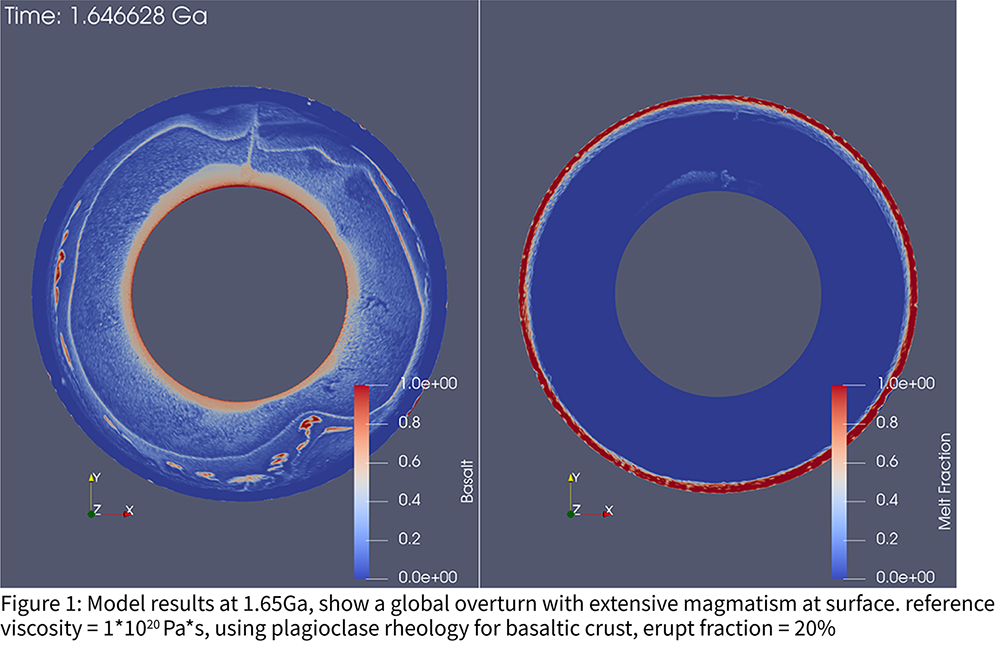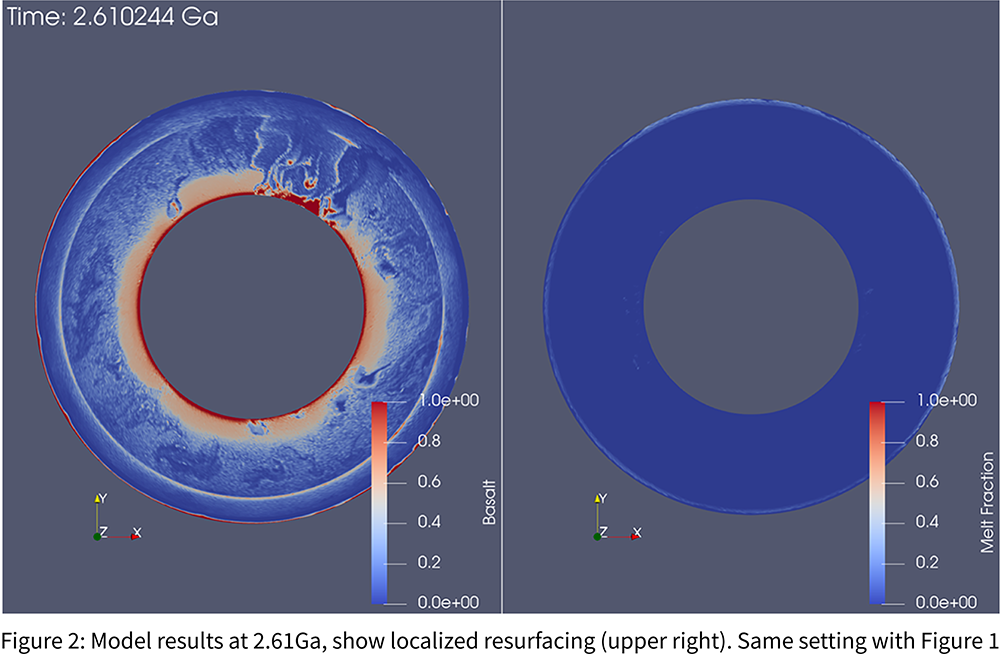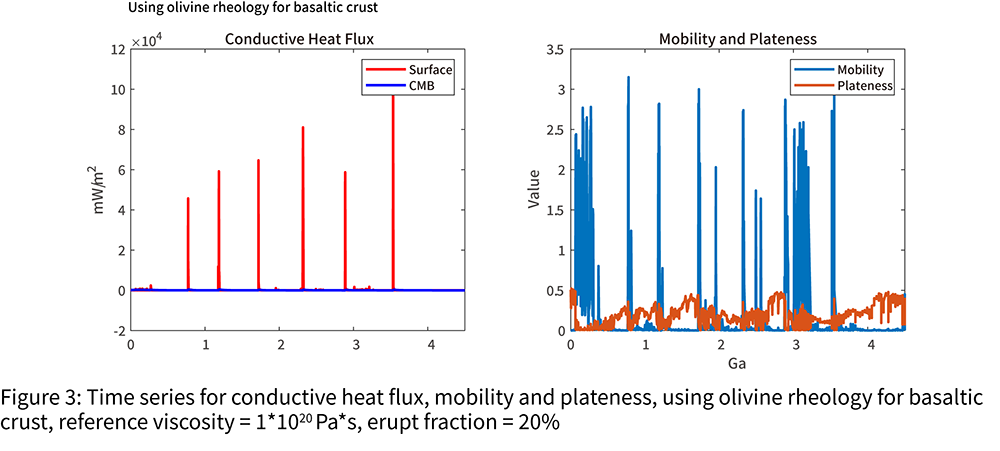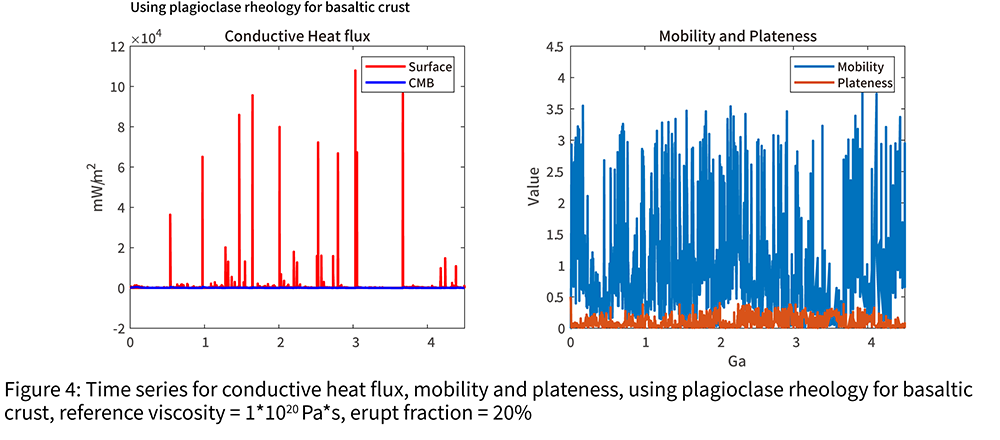Implications of a realistic crustal rheology for Venus’ resurfacing history and global tectonics
- 1Department of Earth Sciences, ETH Zürich, Zürich, Switzerland (tianjia@student.ethz.ch)
- 2Institute of Geophysics, Department of Earth Sciences, ETH Zürich, Zürich, Switzerland
Introduction: Although Venus shares many similar characteristics with Earth, like its size, distance to sun, and bulk composition, its surface characteristics significantly differ from those on Earth, especially in the lack of plate tectonics. From a geodynamic perspective, Venus has been proposed to be in an episodic-lid regime with catastrophic resurfacing and episodic overturns for the lithosphere (e.g., Armann & Tackley, 2012). However, these global models assumed that Venus’ crust has the same rheology as olivine and neglect dislocation creep, resulting in negligible deformation between overturn events, whereas in contrast, Venus' crust exhibits substantial tectonic deformation (e.g. Ivanov and Head, 2011; Ghail, 2015) and regional geodynamic models assuming a realistic, laboratory experiment-based crustal rheology and igneous intrusion into the crust, successfully reproduce surface features like coronae (Gerya, 2014; Gülcher et al., 2020). Therefore, in this study, we test the influence of a strain-rate dependent laboratory experiment-based rheology for the crust, as well as intrusive volcanism, in global geodynamic models to evaluate whether these factors could affect Venus’ tectonics and evolution, and help to explain Venus’ surface characteristics.
Methods: We use the mantle convection code StagYY (Tackley, 2008) in a 2D spherical annulus geometry to model the thermochemical evolution of Venus. The infinite Prandtl number approximation is assumed, and compressibility is included in the model by assuming anelastic approximation.
A composite rheology is assumed, including diffusion creep, dislocation creep, and plastic yielding (using an effective rheology). This rheology depends on composition via the olivine and pyroxene-garnet phase systems, in both solid and molten states. For the basaltic crust, a plagioclase (An75) rheology from (Ranalli, 1995) as used in (Gülcher et al., 2020) is applied to the basalt facies in the pyroxene-garnet system. For other facies in pyroxene-garnet and olivine system, the rheological parameters are based on (Karato & Wu, 1993) for the upper mantle and (Yamazaki & Karato, 2001; Ammann et al., 2010) for the lower mantle. Additionally, we include intrusive magmatism in the model using an approach similar to (Lourenço et al., 2020).
Preliminary results and discussions: For the resurfacing history for Venus, the models show that if both dislocation creep rheology and plastic yielding plus intrusion magmatism are included, there would be both catastrophic global overturns with extensive magmatism (Figure 1) and localized resurfacings (Figure 2) during Venus’ mantle evolution. These two types of resurfacing are also shown in the time series of conductive heat flux (Figure 3 and 4): the conductive heat flux is much larger for global overturn due to extensive intrusive magmatism. Additionally, the surface mobilities in our models (Figure 3 and 4) differ from surface mobilities in olivine-crustal-rheology models, where the global overturns are followed by stagnant-lid phases with near-zero surface mobilities. Applying the realistic rheology (instead of olivine diffusion-creep rheology) to the crust could lead to a transition from near episodic-lid resurfacing (Figure 3) to a scenario with more local resurfacings and generally higher and more continuous surface mobilities (Figure 4).
Contrary to the previous global models (Armann & Tackley, 2012), there are no persistent mantle plumes in our models. Basalt accumulating at the boundary between upper and lower mantle (e.g. in Figure 2) works as a barrier for convective flows and affects mantle upwelling from the core-mantle boundary. Also, even if the intrusion depth is set to be below the basaltic crust (possibly, most of the intrusions solidify to form basaltic crust there), there could still be melt present in the crust (Figure 5). These short-term crustal melting events are in accord with observations of recent magmatic features found on Venus’ surface, and the short-term plumes suggested by coronae formation models (Gerya, 2014; Gülcher et al., 2020)





References:
Ammann, M. W., J. P. Brodholt, J. Wookey, and D. P. Dobson (2010). Nature, 465, 462-465.
Anderson, F. S., & Smrekar, S. E. (2006). Journal of Geophysical Research-Planets, 111(E8)
Armann, M., & Tackley, P. J. (2012). Journal of Geophysical Research: Planets, 117(E12)
Gerya, T. V. (2014). Earth and Planetary Science Letters, 391, 183–192.
Ghail, R. (2015), Planetary and Space Science, 113-114, 2-9
Gülcher, A. J. P. et al. (2020) Nature Geoscience, 13(8), 547–554.
Ivanov, M. A., and J. W. Head (2011). Planetary and Space Science, 59(13), 1559-1600
Karato, S., & Wu, P. (1993). Science, 260(5109), 771–778.
Lourenço, D. L. et al. (2020). Geochemistry, Geophysics, Geosystems, 21(4)
Tackley, P. J. (2008). Phys. Earth Planet. Inter. 171(1-4), 48-54.
Yamazaki, D., & Karato, S. (2001). American Mineralogist, 86(4), 385–391.
How to cite: Tian, J., Tackley, P., and Rozel, A.: Implications of a realistic crustal rheology for Venus’ resurfacing history and global tectonics, European Planetary Science Congress 2021, online, 13–24 Sep 2021, EPSC2021-484, https://doi.org/10.5194/epsc2021-484, 2021.

